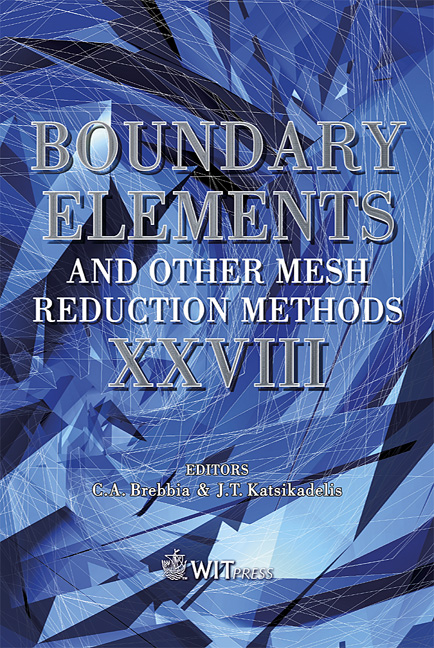Iterative Coupling In Fluid-structure Interaction: A BEM-FEM Based Approach
Price
Free (open access)
Transaction
Volume
42
Pages
6
Published
2006
Size
479 kb
Paper DOI
10.2495/BEM060211
Copyright
WIT Press
Author(s)
D. Soares Jr1, W. J. Mansur1 & O. von Estorff
Abstract
An iterative coupling of finite element and boundary element methods for the investigation of coupled fluid-solid systems is presented. While finite elements are used to model the solid, the adjacent fluid is represented by boundary elements. In order to perform the coupling of the two numerical methods, a successive renewal of the variables on the interface between the two subdomains is performed through an iterative procedure until the final convergence is achieved. Keywords: iterative coupling, solid-fluid interaction, BEM, FEM, adjustable time-steps, nonlinear analysis. 1 Introduction Most of the BEM/FEM coupling algorithms [1-3] are formulated in a way that, first, a coupled system of equation is established, which afterwards has to be solved using a standard direct solution scheme. Such a procedure leads to several problems with respect to accuracy and efficiency. First, the coupled system of equation has a banded structure only in the FE part, while in the BE part it is fully populated. Consequently, for its solution the optimized solvers usually used in the FEM cannot be employed anymore, which leads to rather expensive calculations with respect to computer time. Second, the duration of a time step needs to be the same in all subsystems. In general, however, the velocities of the
Keywords
iterative coupling, solid-fluid interaction, BEM, FEM, adjustable time-steps, nonlinear analysis.





